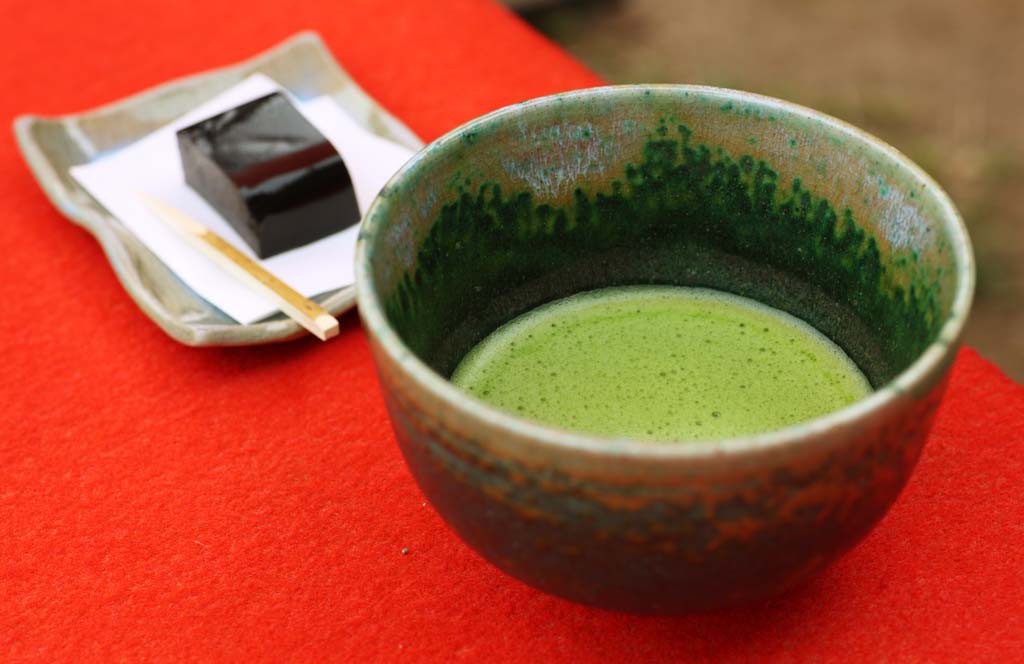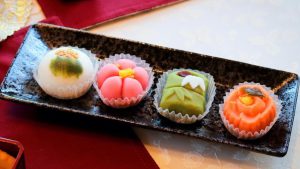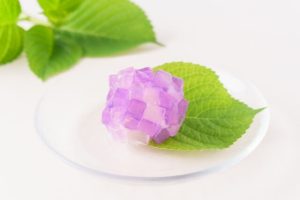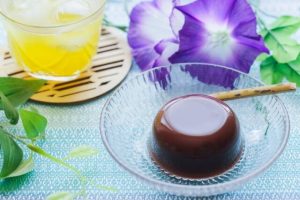Are you familiar with selecting appropriate sweets for tea ceremony practice sessions and formal gatherings?
For beginners and students whose teachers typically prepare sweets, choosing tea ceremony confections might seem challenging.
Let me guide you through selecting the perfect sweets to complement your Japanese tea ceremony experience!
Why Are Sweet Confections Essential in Tea Ceremony?

Why Are Sweet Confections Essential in Tea Ceremony?
Japanese tea ceremonies almost always include sweet confections, but why?
Sweet treats serve a specific purpose – they balance the bitter taste of matcha green tea.
Sweet confections play a similar role in Western tea culture, where scones complement bitter English tea.
Tea ceremony etiquette requires eating sweets before drinking tea.
The proper etiquette exists because:
・Eating while drinking is considered poor manners
・Tea drinking follows specific rules
・Sometimes finishing sweets before tea arrival isn’t possible
If unable to finish sweets beforehand, enjoy tea first, then continue with remaining confections.
Essential Points for Choosing Practice Session Sweets
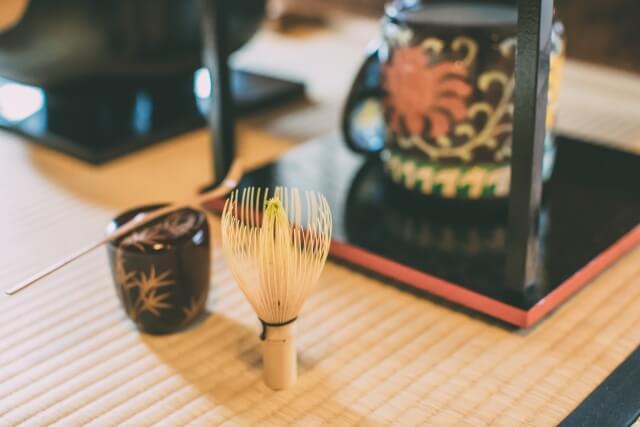
For beginners, selecting sweets typically starts with practice sessions rather than formal tea gatherings.
Key considerations include choosing between:
Omogashi (moist Japanese confections)
Higashi (dry Japanese confections)
Traditional tea gatherings follow a structured schedule:
Morning: Charcoal ceremony
Noon: Kaiseki meal
Afternoon: Thick tea ceremony
Finale: Light tea ceremony
Matching Sweets with Tea Types
Thick tea ceremonies require omogashi, while light tea ceremonies use higashi.
Sweets are served during both thick and thin tea ceremonies. For thick tea ceremonies (koicha), moist sweets (omogashi) are served, while dry sweets (higashi) accompany thin tea (usucha). When choosing sweets for practice sessions, confirming which type of sweets you’re responsible for is essential.
Practice sessions differ from formal tea ceremonies in their sweet pairings. Since thick tea practice requires more experience and time, some sessions focus only on thin tea preparation. During these sessions, your teacher may ask you to select sweets suitable for thin tea.
Sometimes practice sessions divide participants between thick and thin tea groups, but they share the same sweets. In such cases, teachers often specify moist sweets (omogashi). These sweets should have a subtle sweetness and lighter texture to complement both tea types.
Dry sweets (higashi) are another common choice for practice sessions. These shelf-stable confections can be purchased in bulk for several weeks of practice. Assorted rakugan (pressed sugar sweets) in various colors and shapes offer variety without becoming monotonous.
When selecting higashi for extended practice periods, choose designs without strong seasonal motifs, as seasons may change before finishing the sweets.
How to Choose Moist Sweets (Omogashi)
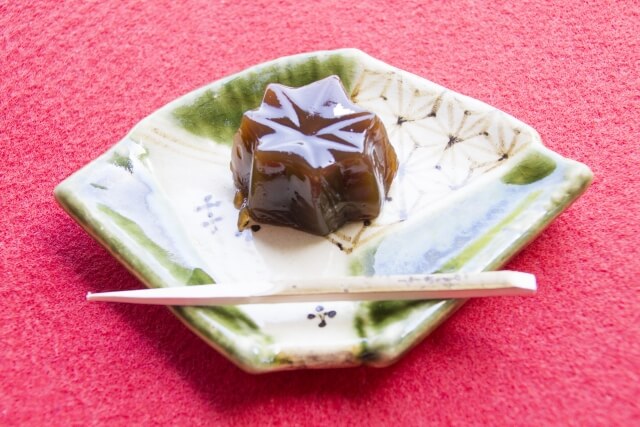
Now, let’s explore selecting moist sweets for formal thick tea ceremonies.
Unlike practice sessions, formal thick tea ceremonies require sweets with lasting flavors and pronounced sweetness, such as kinton (sweet potato paste) or uiro (steamed rice cake).
Consider these practical aspects:
[table type=”standard_minimal”]
[trow]
[thcol]Key Factor[/thcol]
[thcol]Recommendation[/thcol]
[thcol]Reason[/thcol]
[/trow]
[trow]
[tcol]Texture[/tcol]
[tcol]Firm, stable[/tcol]
[tcol]Must transfer with chopsticks[/tcol]
[/trow]
[trow]
[tcol]Structure[/tcol]
[tcol]Maintains shape[/tcol]
[tcol]Prevents crumbling during handling[/tcol]
[/trow]
[trow]
[tcol]Stickiness[/tcol]
[tcol]Minimal[/tcol]
[tcol]Easy removal from chopsticks[/tcol]
[/trow]
[trow]
[tcol]Visual appeal[/tcol]
[tcol]Elaborate designs[/tcol]
[tcol]Enhances ceremony aesthetics[/tcol]
[/trow]
[/table]
Unlike dry sweets, guests transfer omogashi to kaishi paper using chopsticks before eating. Select sweets that maintain their structure during this process.
Choose visually striking sweets that surpass practice session varieties in elegance. Japanese confections offer numerous options with intricate designs and artistic details. Consider coordinating colors and patterns with:
・Tea ceremony theme
・Dry sweets selection
・Overall aesthetic harmony
Remember to select sweets that create a memorable visual experience while maintaining practical functionality during the ceremony.
How to Select Dry Sweets (Higashi)
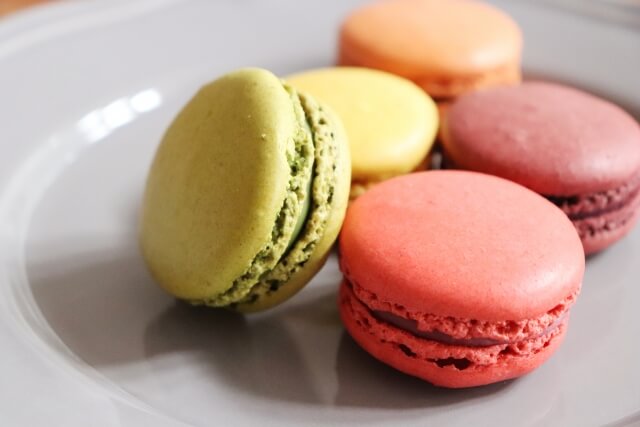
Can you picture how dry sweets are arranged at tea ceremonies?
Unlike moist sweets, tea ceremonies feature multiple varieties of dry sweets. The selection extends beyond rakugan to include:
[table type=”standard_minimal”]
[trow]
[thcol]Sweet Type[/thcol]
[thcol]Description[/thcol]
[thcol]Characteristics[/thcol]
[/trow]
[trow]
[tcol]Senbei[/tcol]
[tcol]Rice crackers[/tcol]
[tcol]Light, crispy texture[/tcol]
[/trow]
[trow]
[tcol]Unpei[/tcol]
[tcol]Delicate wafers[/tcol]
[tcol]Melt-in-mouth quality[/tcol]
[/trow]
[trow]
[tcol]Konpeitō[/tcol]
[tcol]Sugar candy[/tcol]
[tcol]Sparkling appearance[/tcol]
[/trow]
[/table]
Visual appeal remains crucial for dry sweets, just as with moist confections.
A key distinction lies in the serving vessels – while moist sweets arrive in round or high-rimmed containers, dry sweets are presented in special higashi containers.
Higashi containers offer greater variety in shape and design compared to moist sweet containers, often featuring decorative elements themselves.
When selecting dry sweets, consider multiple factors:
Visual harmony between different sweets
Compatibility with the container design
Arrangement possibilities within the container
Overall aesthetic impact
Special Occasion Exceptions
Some ceremonies require specific sweets. A prime example is the Hanabira-mochi used in Urasenke school’s New Year ceremony.
These unique sweets feature:
・White mochi exterior
・Pink diamond-shaped mochi visible inside
・Unexpected ingredients like white miso
・Burdock root filling
・Delicate balance of sweet and salty flavors
When instructed to purchase these special occasion sweets:
・Research different confectionery shops
・Compare subtle variations in taste and appearance
・Choose based on personal preference
・Place orders well in advance due to limited availability
Choosing Seasonal Sweets
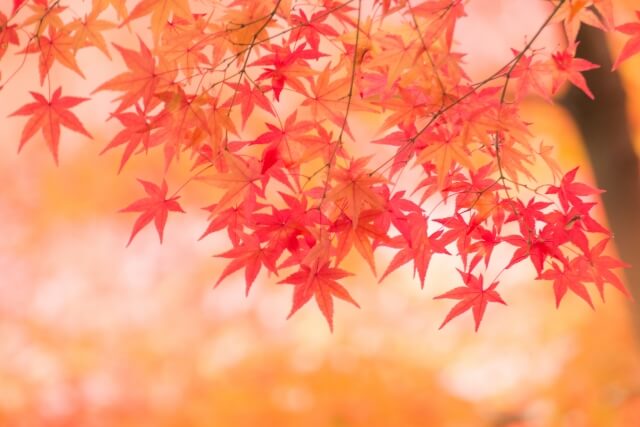
Above all else, selecting sweets that match the current season remains paramount in tea ceremonies. Seasonal awareness plays a vital role in Japanese tea ceremony culture.
While practice session sweets may be less season-specific, formal tea ceremonies emphasize visual appreciation. Just as guests admire tea utensils, the sweets provide both culinary and visual enjoyment.
Select confections that evoke seasonal feelings through:
・Names reflecting natural phenomena
・Seasonal designs and motifs
・Traditional seasonal ingredients
Final Thoughts
hoosing tea ceremony sweets involves multiple considerations:
While selecting appropriate sweets might seem challenging, it represents one of tea ceremony’s most engaging aspects. Sweets play a crucial role in creating the perfect atmosphere, alongside:
The ability to select sweets matching personal taste while adhering to ceremonial principles adds a wonderful dimension to tea ceremony practice.
We hope this guide helps you make informed choices for your next tea ceremony experience!
